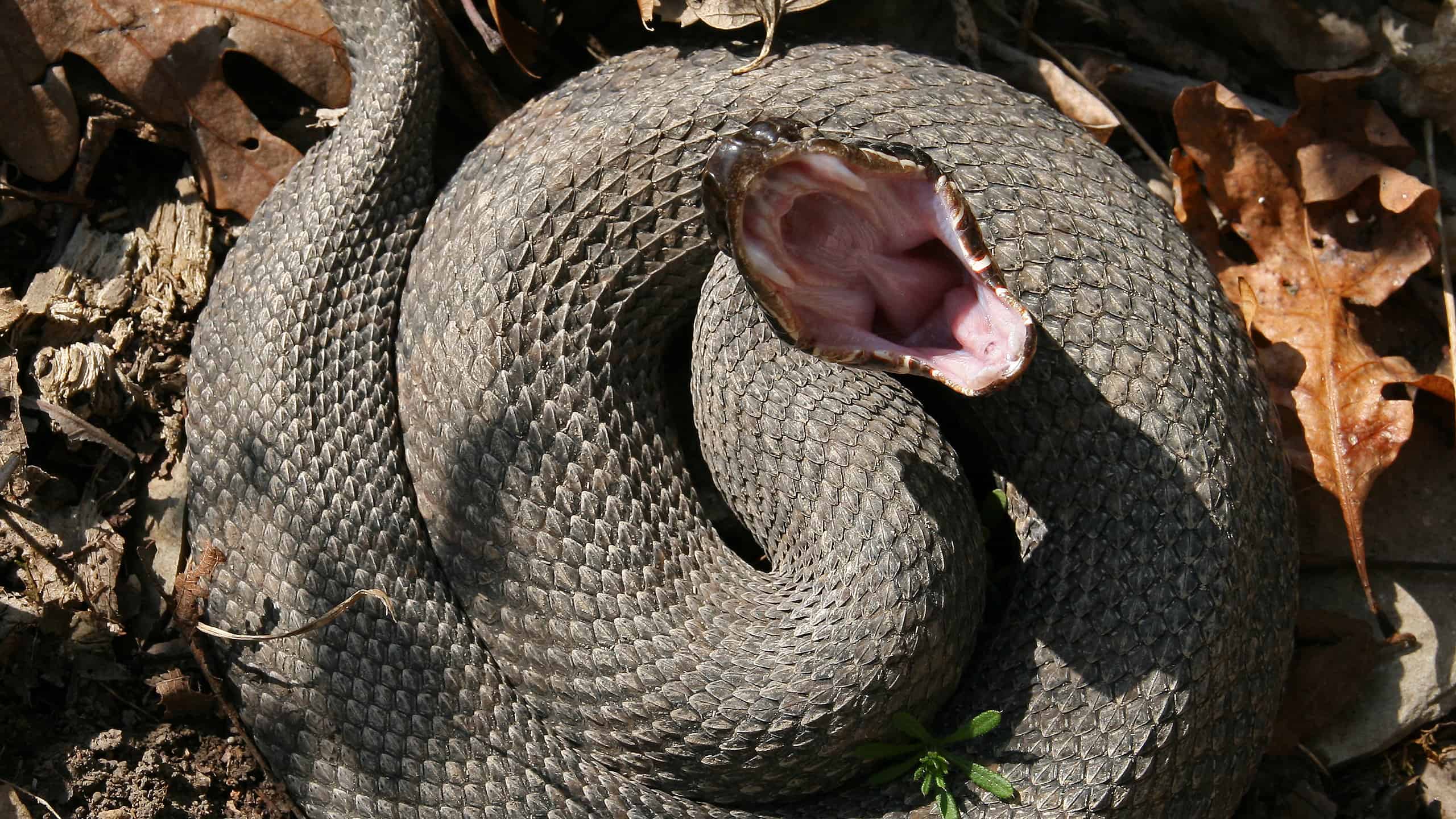Snakes (Serpentes) exist on every continent on Earth except Antarctica. Some love these well-known reptiles — kept as favorite household pets — and others fear them. The serpent is a well-known mythical symbol that is recognized throughout the world. One of the main reasons these reptiles are so well known is their potential danger to humans. Many people have reservations about snakes, whether it be their venom or their abilities to squeeze the life out of animals and swallow massive prey whole.
Most people fear the mouth of the snake more than anything because that is where the fangs and potentially deadly bites come from. However, a typical motion seen from snakes is a yawn-like motion. Are snakes perpetually tired, or could there be another reason for them to be yawing? This article will tackle the top five reasons a snake might be yawing and what they all mean.
Top 5 Reasons Why Snakes Yawn
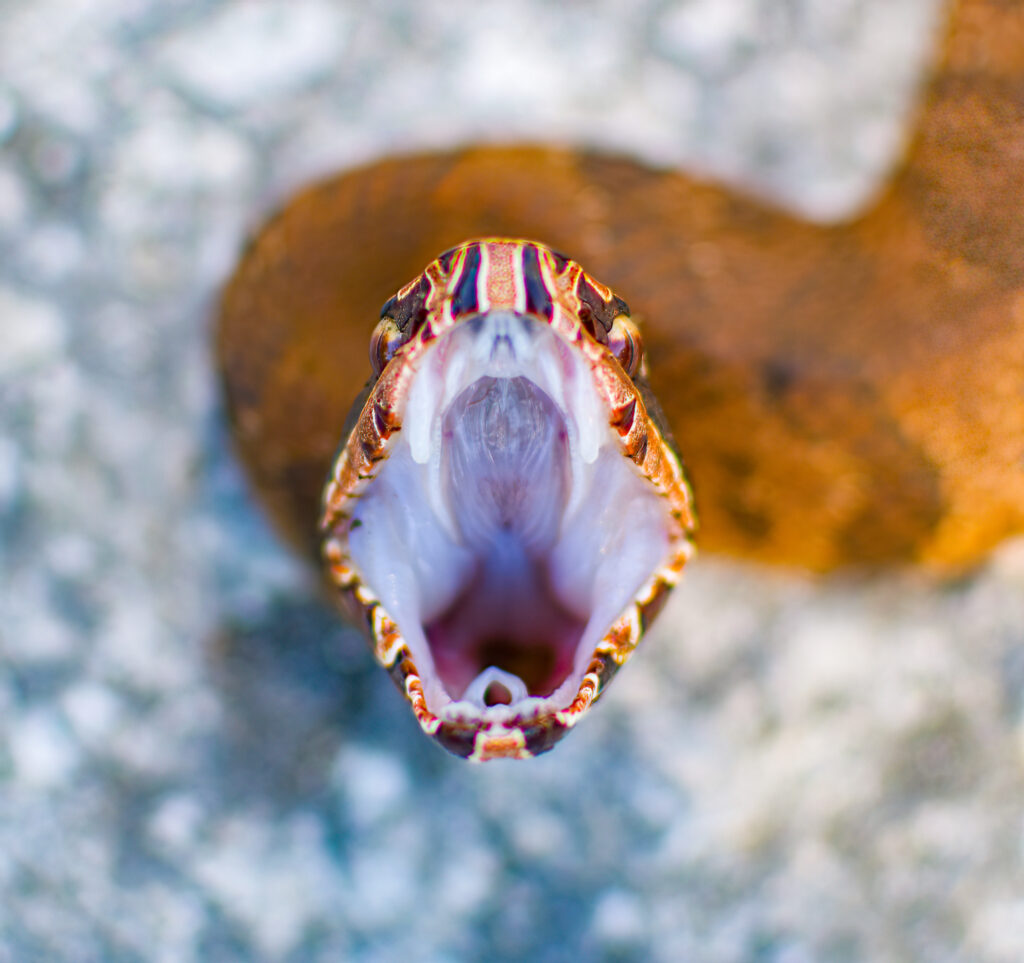
Different from the yawn of a human, the yawn-like motion of a snake is referred to as mouth gaping, and it does not correlate with being tired.
©iStock.com/Chase D’animulls
While the motion may appear like a yawn that you or I would have after a long night out, the motion we see from the snake is not a yawn; instead, this motion is known as mouth gaping, and it occurs for various reasons, none of which have to do with the snake’s lack of sleep. Here are the top five reasons that a snake engages in mouth gaping.
Reason 1: Preparation for and After Eating
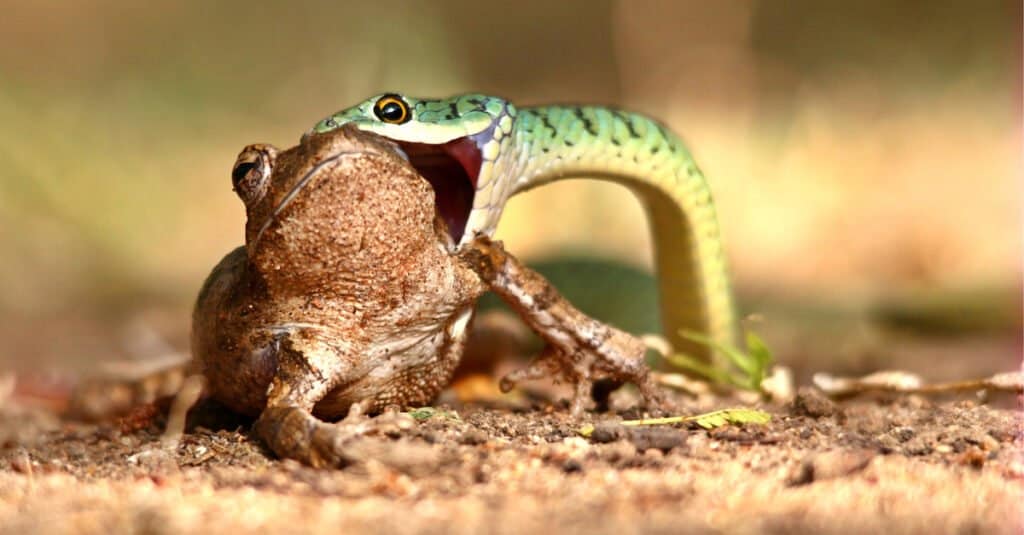
A common myth about snakes is that they can unhinge their jaws; this is not true. Snakes increase their jaw’s width by stretching the ligaments connected to it.
©Tallies/Shutterstock.com
Snakes are carnivores, and their diet consists entirely of other animals. They feast on various animals, including amphibians, insects, mammals, and other snakes. The snakes are often known for being able to consume substantial prey, sometimes even larger than themselves. Snakes do not chew their food; instead, they swallow it whole. To do that, they must fit the food past their jaws.
A common myth is that snakes can unhinge their jaws; however, that is untrue. While it may look similar to becoming unhinged, what is happening is the snake is increasing its jaw’s width. The snake’s jaw is not connected like ours and other mammals; stretchy ligaments connect its jaw. Those ligaments allow it to spread apart and increase the width of its mouth.
When the snake is doing this, it appears almost as if it is walking its mouth down the body of its prey. The snake also has backward-facing teeth to hold the prey in place and prevent it from escaping if it is still alive as the snake is consuming it. In this instance, the snake is making a “yawn-like” motion to widen its jaw to devour its prey successfully. Similar to how an athlete stretches their muscles before a workout, the snake stretches its jaw to prepare for a meal. In addition, you may also see the snake “yawning” or mouth gaping after a meal to return the jaw to its resting position.
Reason 2: As a Warning to Others
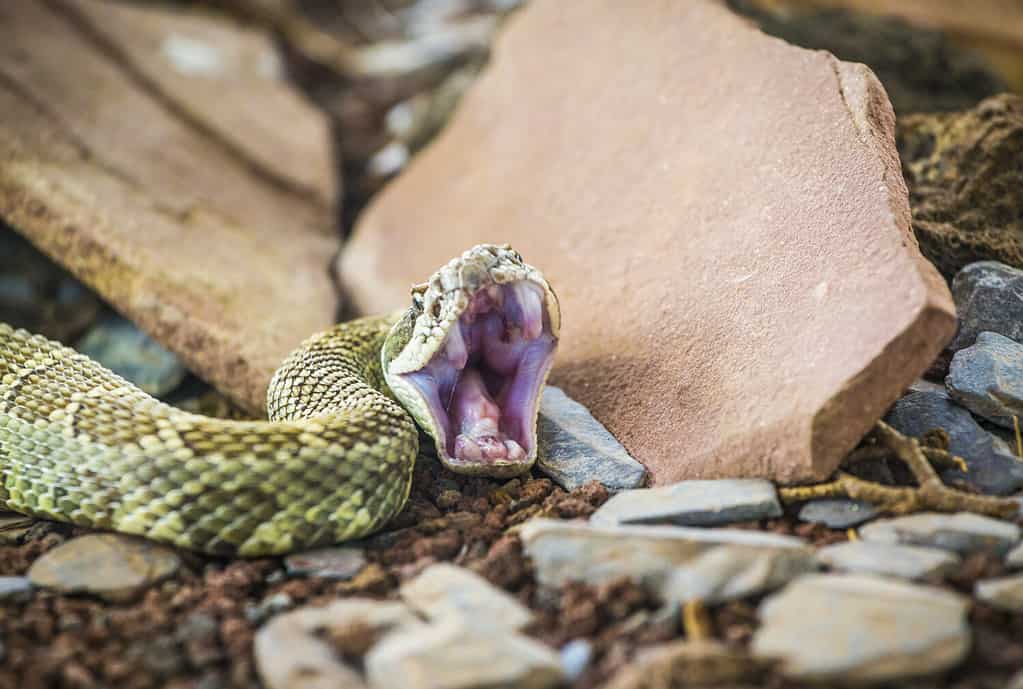
Snakes often show defensive tactics through mouth gaping and tail vibrating.
©Clement Horvath/Shutterstock.com
Although very successful predators, snakes are also often the prey of many different animals. Humans, large birds, mongooses, and coyotes are among the many animals that call snakes their prey. Mouth gaping, or the yawn-like motion, also serves as a method of defense for the snake.
A study was done with cottonmouth snakes, in which 101 cottonmouths were collected and approached with fake human arms to act as a threat. The cottonmouths in the study demonstrated three forms of defensive positions: mouth gaping, tail vibrating, and striking. The study showed “42.57% of the snakes (43/101) gaped during a predatory encounter.” Many of the snakes who gaped also displayed tail vibrating. “Of the 32 snakes that both gaped and struck during a trial, 81% (26/32) gaped before — as opposed to after — striking, which indicated the warning character of gaping behavior.”
This study proved that snakes use mouth gaping as a warning to predators and that snakes that display mouth gaping are more likely to strike than snakes that do not. If you see a snake while out in the wild and it begins to make a yawn-like motion toward you, it could see you as a threat and warn you to back away.
Reason 3: To Detect Information About Their Surroundings
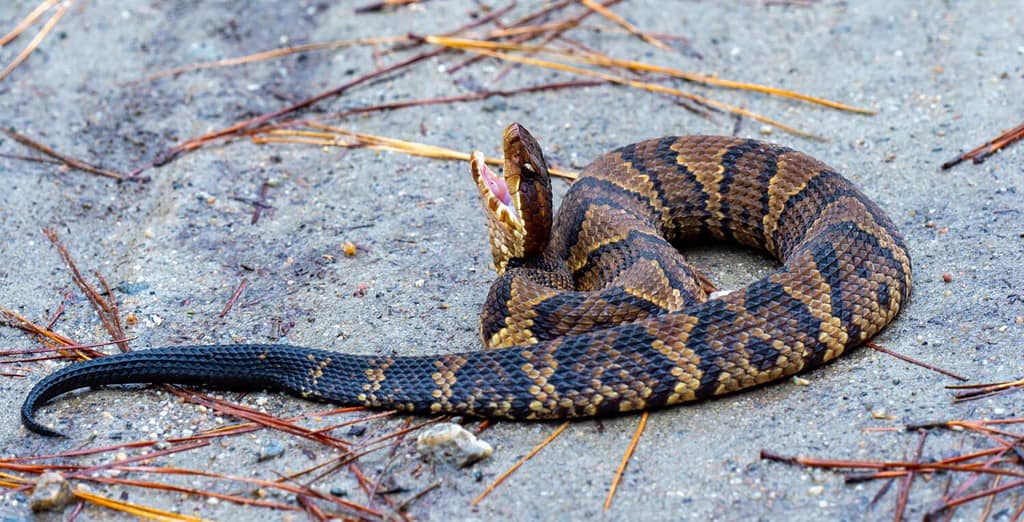
Snake nostrils work independently from one another, allowing the snake to determine where different scents originate from simultaneously.
©Kyle J Little/Shutterstock.com
Snakes do not have the strongest eyesight, so they need another advantage when sensing their surroundings. Snakes have an organ called the vomeronasal organ — also known as the Jacobson’s organ — located on the roof of their mouth. This organ allows “tiny chemical particles to be interpreted by the snake’s brain.”
Although this organ resides in the mouth, it helps the snake to smell. Snakes can smell in stereo, meaning each nostril can work independently of the other; this allows the snake to determine where different scents are coming from simultaneously. To best use this organ, the snake will use its tongue and mouth to collect the necessary odors from its environment.
The snake may flick out its tongue or use its mouth to gape. The snake’s tongue shoots out and collects the smell, then brings it back to the vomeronasal organ; because the snake can see multiple fragrances from different directions, it can choose which scent trail to follow. This trait is particularly useful in avoiding predators or finding prey and mates. While the tongue may gather most of the information, having the mouth open — in a yawn-like motion — grants more straightforward access to the vomeronasal organ, thus providing the snake with more clues about its current environment.
Reason 4: As a Sign of a Health Issue
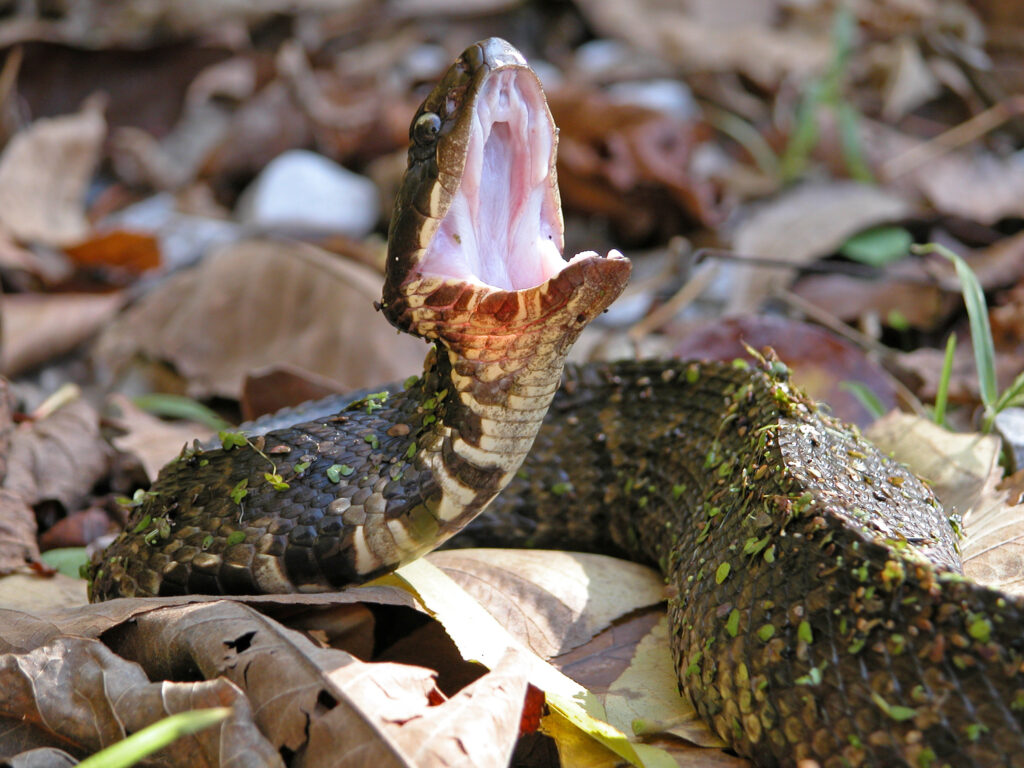
Respiratory issues and mouth rot are common health issues that force the snake to breathe through its mouth.
©iStock.com/Gerald DeBoer
Sometimes, seeing a snake “yawn” is not good and can indicate a severe problem. Occasionally, a snake will have its mouth agape because of an infection. According to the VCA, “Snakes have a unique respiratory tract. Most snakes only have one functional, simple lung.” Having one functional lung can leave them open to respiratory infections. Bacteria cause most of these infections, but viruses, fungi, and parasites can also be the culprit.
Respiratory infections in snakes can lead to increased mucus in their mouths and excessive nasal discharge. These symptoms may cause the snake to make gurgling sounds and to need to open-mouth breathe. This constant open-mouth breathing will resemble a mouth gaping.
Another health issue that may cause snakes to open-mouth breathe is mouth rot. Mouth rot is an infection of the mouth caused by bacteria. It is usually not the primary disease but is in conjunction with another. Along with a foul smell, discharge, and loss of appetite, a snake may also breathe with an open mouth. Open-mouth breathing is abnormal, so if a snake does this for extended periods, it indicates some infection.
Reason 5: Shedding
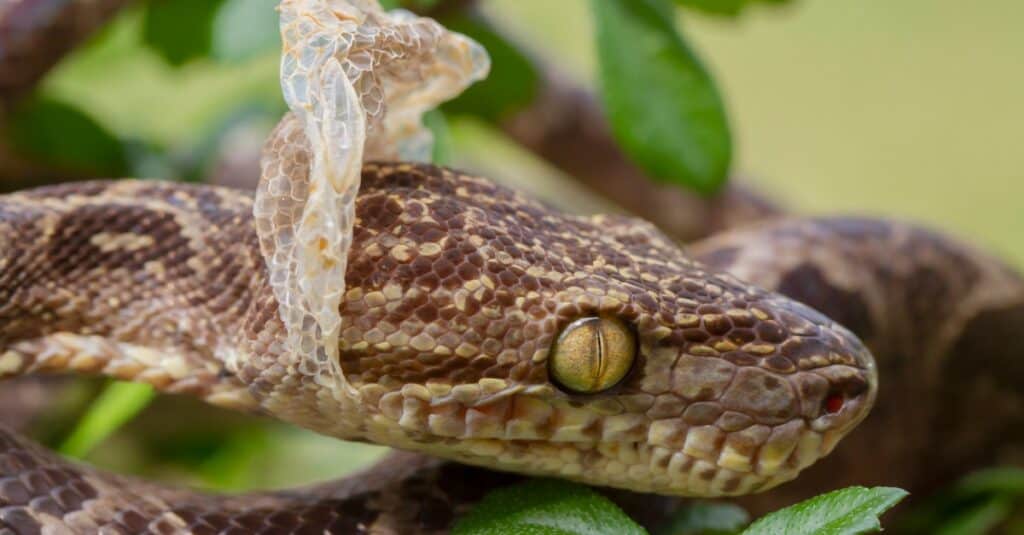
Snakes shed their skin in one piece; they need to move it continuously down their body.
©iStock.com/Mark Kostich
The final reason that you may find a snake partaking in a yawn-like motion is because they are shedding. Snakes shed their skin in three stages:
- They begin to rub their head against objects until their skin splits open.
- They start moving the muscles to stretch the old skin and wiggle out of it.
- The outer layer of skin is turned inside out, and the snake can escape from it.
You may notice mouth gaping or “yawing” occurring between the first and second shedding stages. The shedding usually starts around the head; once the snake breaks open the skin from rubbing it, it may open and close its mouth to stretch the skin and continue to get it to move down its body. The snake will rub its head region to break the skin, and then the mouth is the first muscle it will move to begin removing the old skin.
The snake intends to get the old skin off as quickly as possible. It is dry — and most likely uncomfortable — and can cause issues with the snake’s eyes if it is not shed off properly.
Summary of Top 5 Reasons Why Snakes Yawn
Below is a table summarizing the top reasons why snakes yawn and details about each.
| Rank | Reason | Description |
|---|---|---|
| 1 | Preparation for and after eating | Snakes will widen their jaws to engulf larger prey. When finished, they will return their jaw to their neutral state. |
| 2 | Warning to others | Mouth gaping can be used as a defense mechanism, warning of an incoming strike. |
| 3 | Detect information about the surroundings | Respiratory infections and mouth rot often cause snakes to open their mouths to breathe. |
| 4 | Sign of a health issue | Respiratory infections and mouth rot often cause snakes to have to open-mouth breathe. |
| 5 | Shedding | Snakes may open their mouth to help stretch out the old skin and move it down their bodies. |
Common Snake Questions (FAQs)
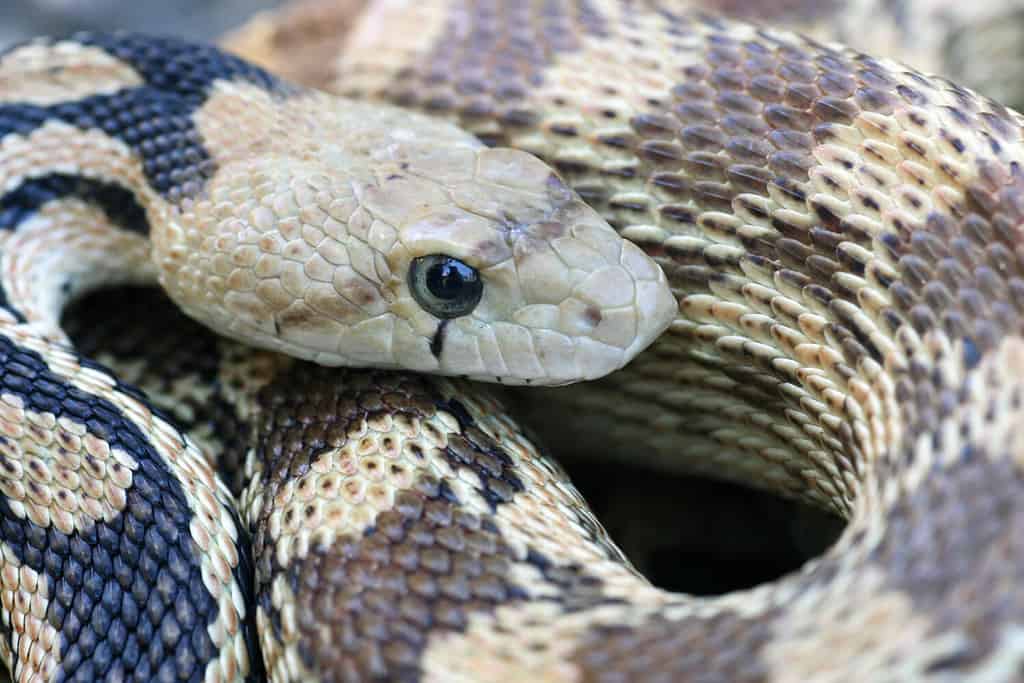
Snakes are often referred to as poisonous, but they are not. Some snakes are venomous, but only a very small number are also poisonous.
©Michael Benard/Shutterstock.com
Are all snakes poisonous?
To begin, snakes are not poisonous; they are venomous. Venomous species actively deliver their chemical toxin to their prey through a bite or a sting, injecting it into the target. Poison must be ingested, inhaled, or absorbed to cause damage. There are a few poisonous species, notably the keelbacks of Southeast Asia.
No, not all snakes are venomous. Out of over 4,000 different species, only 600 are venomous. To learn about some non-venomous snakes, check out our article “9 Non-Poisonous Snakes in the World.”
How can you tell the difference between a poisonous (venomous) and non-poisonous snake?
If the snake has a rattle, it is venomous. Also, many venomous snakes have large triangular-shaped heads with thinner necks, but the best way to tell them apart is to know which species inhabit your area. These are just a few ways to tell apart a venomous vs. non-venomous snake.
What do you do if you see a snake?
If you see a snake outdoors, leave it alone; you can watch where it goes, and if it goes underneath a piece of your property — like a shed or under a vehicle — you should call a snake catcher to come to apprehend it. If you find the snake inside your home, leave the room immediately, close the door, and fill any gaps where the snake could escape. Then, call an expert to remove the snake from your home.
How can you tell if a snake is dangerous?
While some snakes may have distinguishing characteristics that make them easier to identify — such as the rattlesnake — it can be challenging to differentiate between a dangerous and harmless snake. The general rule is to exercise caution with all snakes and to thoroughly research an area and its snake inhabitants before visiting.
Discover the "Monster" Snake 5X Bigger than an Anaconda
Every day A-Z Animals sends out some of the most incredible facts in the world from our free newsletter. Want to discover the 10 most beautiful snakes in the world, a "snake island" where you're never more than 3 feet from danger, or a "monster" snake 5X larger than an anaconda? Then sign up right now and you'll start receiving our daily newsletter absolutely free.
Thank you for reading! Have some feedback for us? Contact the AZ Animals editorial team.

